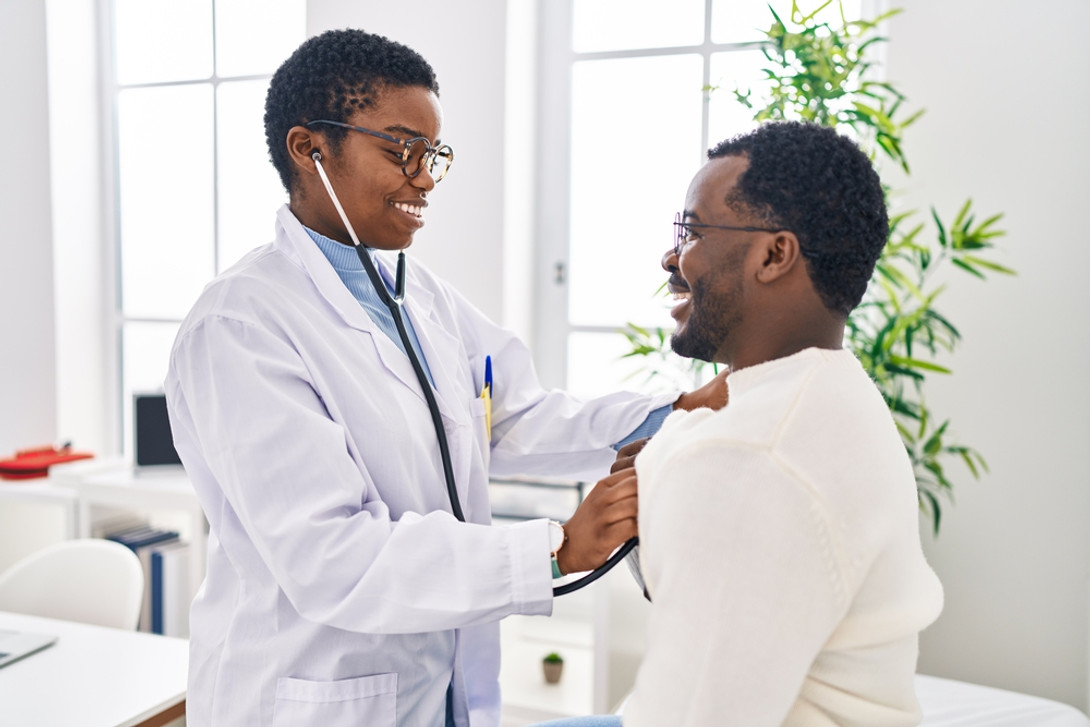As we celebrate Black History Month in February, it's also important to recognize that it's American Heart Month too. The overlap between these observances is no coincidence, as Black communities in the United States face heightened risks when it comes to heart health. This is a perfect opportunity to shine a spotlight on the cardiovascular health challenges disproportionately affecting Black communities in the U.S. Addressing these disparities through education and action is essential - not just for awareness, but for saving lives.
Heart health is a critical issue for African Americans, who are at a higher risk for conditions like high blood pressure, heart disease, and stroke.
Here are five key facts to raise awareness and inspire action:
1. High Blood Pressure Affects 2 in 5 African American Adults
Nearly 60% of Black adults in the U.S. have high blood pressure, one of the highest rates worldwide. This condition, called the “silent killer,” increases the risk of heart disease, strokes, and early death. Women are especially affected, with Black women being 60% more likely to have high blood pressure than non-Hispanic white women. Sadly, less than half of Black adults have their blood pressure under control, amplifying these health risks.
2. Heart Disease Mortality Rates are Higher
Heart disease is not just a health issue - it’s a community crisis demanding immediate attention. It is the leading cause of death in the U.S., and Black adults are 20% more likely to die from it than non-Hispanic whites. Contributing factors include higher rates of diabetes, obesity, and limited access to healthcare, making this a serious health crisis in Black communities.
3. Stroke Risks are Significantly Higher
Black adults face the highest risk of stroke compared to other groups. Black women have a 5.4% stroke prevalence (nearly double that of women from other racial groups), and Black men have a 4.8% rate, compared to less than 3% of other demographics; according to heart.org.
These numbers highlight the urgent need for better stroke prevention, education, and awareness in Black communities.
4. Hands-Only CPR Can Save Lives
Sudden cardiac arrest is often fatal, but bystander CPR can double or triple survival chances. Sadly, Black Americans are 41% less likely to receive bystander CPR during such emergencies. Promoting Hands-Only CPR training within Black communities can help close this gap and save lives.
5. Access to Preventive Care is Key
Socioeconomic factors like limited access to healthy food, safe places to exercise, and quality healthcare make it harder for many Black Americans to maintain good heart health. These barriers also delay the detection and treatment of conditions like high blood pressure. Promoting equitable healthcare, better nutrition, and community health screenings is essential to reducing these risks.
Community-Centered Action:
Systemic inequities, like limited access to healthcare, nutritious food, and education, contribute to heart health disparities in Black communities. Organizations like the American Heart Association are working to close these gaps through CPR training, blood pressure programs, and advocating for fair healthcare policies.
You can help make a difference this Black History Month:
-
Know Your Risk: Get regular checks for blood pressure, cholesterol, and glucose levels.
-
Educate Yourself: Learn the warning signs of heart attacks and strokes - they can save lives.
-
Learn CPR: Take a CPR course and encourage loved ones to do the same.
Grassroots programs like community screenings and health education are key to building healthier futures. By taking steps today, like advocating for access to care or adopting heart-healthy habits, you can create lasting change for yourself, your family, and your community. Every action matters - together, we can work toward a stronger future where every community has the tools and resources for healthier lives.

